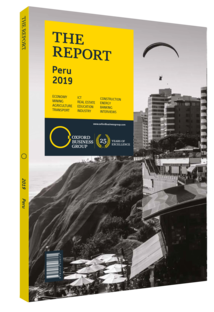Peru embarks of taxation and formalisation efforts to meet deficit targets
Peru has made progress in reducing its fiscal deficit, bringing it down from 3.1% of GDP in 2017 to 2.5% in 2018, before reducing it further to 2.1% in February 2019, according to the Central Reserve Bank of Peru. Furthermore, Scotiabank Perú, the local subsidiary of the Canada-based financial institution, has forecast the deficit will be reduced to 2% by the end of 2019. The expansion of electronic payment infrastructure and strengthening of the anti-tax avoidance framework are designed to overcome reliance on mining revenue This is good news for Peru’s savings buffer, given that financing the deficit has fallen from 15% of GDP in late 2014 to 11% in 2019, according to global credit ratings agency Fitch. Indeed, the balance of Peru’s fiscal stabilisation fund dropped from 4.7% of GDP to 2.6% over the same period. Building on this, the administration of President Martín Vizcarra Cornejo has committed to achieving a primary surplus by 2021.
Improved Taxation
The Ministry of Economy and Finance (Ministerio de Economía y Finanzas, MEF) announced in April 2018 that the government would seek to increase tax revenue from 19.5% of GDP in 2019 to 20.5% by 2022. In order to meet this objective, the MEF introduced a range of new measures to improve tax collection. These include the expansion of electronic payment infrastructure and the strengthening of the country’s anti-tax avoidance framework. These measures were designed to help Peru overcome its reliance on revenue from the mining sector, whose contributions to the national budget decreased significantly between 2013 and 2016 due to the sharp downturn in international metal prices. According to figures from the National Superintendency of Tax Administration, the country achieved a 13.7% increase in tax revenue in 2018, and in the first quarter of 2019 tax collection was up 6.3% compared to the equivalent period the previous year, reaching a total of PEN27.7bn ($8.4bn).
Fiscal Space
However, this rise in Treasury revenue is not necessarily indicative of an expansion of the country’s tax base or improved collection. Rather, increased tax revenue from new and expanded mining projects and lower-than-expected government capital expenditure had a significant impact.
The 2018 budget forecast a deficit of 3.5% of GDP on the basis of increased public investment in infrastructure and services, but the final figure was 2.5%. While this might be good news for bondholders – dollar-denominated Peruvian government bonds traded at an average spread of 130 basis points over US Treasuries as of the end of April, wider only than Chile among Latin American sovereigns – lower-than-expected spending does not necessarily promote sustained economic development. In the case of 2018, this was broadly the result of slow reconstruction following El Niño and delays to major infrastructure projects. The MEF projects that public investment will grow by 4.5% in 2019 as a result of renewed infrastructure investment and progress on delayed projects. The government has also brought forward the payment of mining fees to regional administrations.
However, some observers have been less optimistic; BBVA Research projected that public investment would shrink by 0.2% in 2018 before rebounding by 10.3% in 2020, while Fitch expects public capital expenditure to again fall short of budget projections in 2019. Peru may therefore continue to find itself in the unusual position of being one of very few countries in the world where economists hoping that a fiscal deficit will larger than the forecast figure.
“If the deficit does end up wider, it will be because the government has been able to spend what it intended to,” Guillermo Arbe, head of economic studies at Scotiabank Perú, explained to OBG.
You have reached the limit of premium articles you can view for free.
Choose from the options below to purchase print or digital editions of our Reports. You can also purchase a website subscription giving you unlimited access to all of our Reports online for 12 months.
If you have already purchased this Report or have a website subscription, please login to continue.

